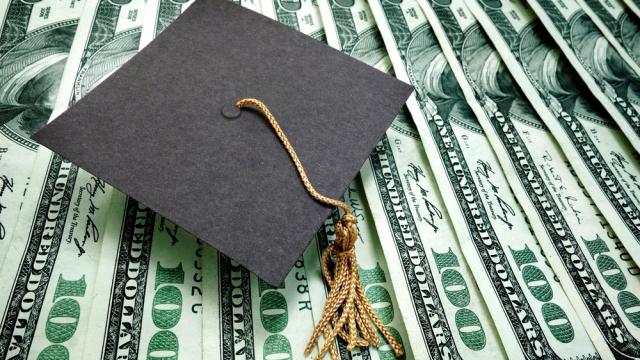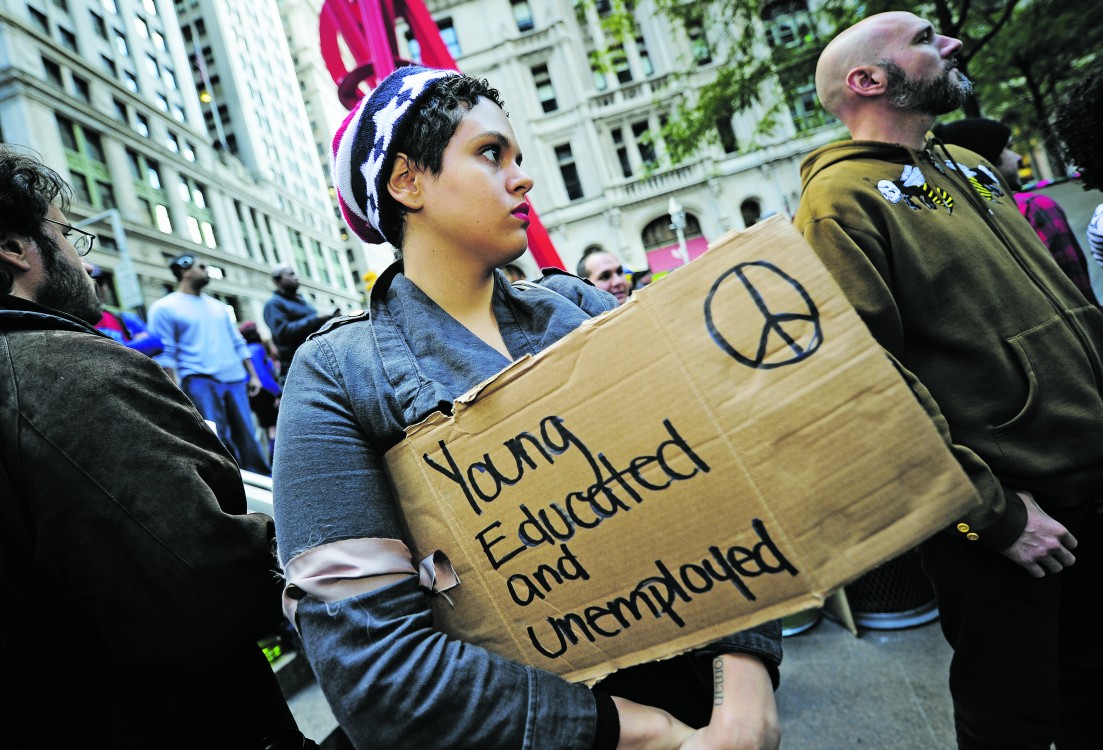
Momentum is building for an exciting “new” idea, one which is in fact far older than many people realize: free higher education in the United States. The cost of educating oneself to participate fully in society is one which our revolutionary forebears understood should be borne by everyone.
In John Adams’ day, that meant an elementary and high school education. Today, for many people, higher education is equally essential. The cost of that education is not an individual or charitable obligation. It is a social one.
The Movement for Free Public Higher Education
Since we first wrote about free higher education as a human right back more than a year ago, the idea has gained considerable momentum. President Obama has proposed a program of tuition-free junior college education. Other groups have begun advocating for free four-year public education.
And, in an exciting development, Democrats in the House and Senate – including Sens. Elizabeth Warren, Brian Schatz and Chuck Schumer, as well as Reps. Keith Ellison, Raul Grijalva, Eric Swalwell and Katherine Clark – have introduced matching resolutions that would guarantee that all students who attend public colleges and universities have access to debt-free college educations. (You can show your support for their efforts here.)
This goal is as old as the American ideal. And it’s as recent as the 20th century, when low-cost or free higher education was widely available in this country. The University of California was essentially tuition-free for most of its 147-year history. New York State’s university system only began charging tuition in 1961. New York City’s University system provided tuition-free education for many years. The University of Connecticut was tuition-free as recently as 1970.
As we move to restore this American idea, let’s not forget the 41 million Americans who were burdened with $1.3 trillion in the few short decades when our nation lost sight of it. Over the last 40 to 50 years, the only option for most people seeking a higher education was to take out student loans – loans that were never imposed on their parents and grandparents, and that hopefully will not be placed on their children.
An American Idea
As Christopher Newfield writes in his book, “Unmaking the Public University,” the concept of public higher education didn’t simply fall out of fashion. It was, as Newfield puts it, “systematically unmade.” as part of a broader pushback against government and in favor of privatization.
That effort was also a pushback against a fundamentally American idea. The notion of free education at all levels has been woven into our nation’s political discourse since the days of Horace Mann, who was one of the nation’s greatest champions of public secondary education in the 19th century.
Mann once wrote, “Education … beyond all other devices of human origin, is the great equalizer of the conditions of men — the balance-wheel of the social machinery.” He eventually became president of Antioch College, an institution that pioneered the integration of life experience and education and has often provided an education on a tuition-free basis. (It did so most recently from 2011 to 2014, through a program called the Horace Mann Fellowship.)
American political philosopher John Dewey wrote that “the community’s duty to education is … its paramount moral duty.”
This new movement for free higher education is therefore a very welcome, and very American, development. But it raises an uncomfortable question: What do we do about the 41 million Americans who are burdened with student debt today?
Ill-Gotten Gains
That issue, too, has been gaining great visibility and momentum lately. Corinthian Colleges Incorporated, which recently suspended operations, misled students with artificially inflated job numbers that incurred a $30 million fine from the Federal government. Why did Corinthian do that? So that students would take out public and private loans in order to enroll in its network of for-profit college businesses.
One does not become a billion-dollar corporation, as Corinthian did, without putting money in the right pockets. As Lee Fang reports in The Intercept, the fraudulently inclined organization paid a number of consulting firms and at least two lobbyist organizations. Its creditors include the American Legislative Exchange Council (ALEC), the Koch brothers-backed conservative group, as well as the right-wing American Enterprise Institute, and it made payments to Karl Rove’s Crossroads GPS.
Corinthian’s abuses are well documented, and its students (past and present) now owe more than a billion dollars in federal government loans – perhaps much more – in addition to a very substantial amount in private loans.
These abuses should shock our national conscience. And the debts involved are, in a very real sense, yours and mine to forgive. Eighty-six percent of all student debt in this country is owned by the federal government. That is why the Corinthian protesters have focused their efforts on the Department of Education, which has the power under current regulations to relieve them of their debt burden – not by simply reducing debt, but by canceling it altogether.
The Corinthian 100, a group of former students associated with the Debt Collective, has been attempting to lobby the Department of Education with mixed results at best. They have won wide support, as they should.
Don’t Reduce Debt. Cancel It.
But what about the rest of the 41 million citizens of this country who are saddled with student debt? They, too, are struggling. Should the movement for free higher education succeed, as we fervently hope it will, they will become the unfortunate members of a “sandwich generation – call them the “in-betweeners” – who carry a burden that generations before them and after them were never asked to carry.
In its final sentence, the new Democratic resolution calling for free higher education declares its support for efforts to “reduce the burden of existing student loan debt.” But how, exactly, are we to go about doing that?
We have an idea: Don’t “reduce” this debt. Cancel it. Debt forgiveness, like debt-free college education, is not a new idea. In fact, it goes back to the time of the ancient Babylonians and Phoenicians. (See our “Liberate 41 Million Americans from Student Loan Debt.”) Student debt forgiveness is the most ethical way to address this $1.3 trillion problem. It is also, as we argued in that essay, a good thing to do for our entire economy.
Debt-free higher education is an idea whose time may have come at last. That may also be true of student debt forgiveness. Last week, a coalition of organizations, including our own, delivered a petition to Sen. Elizabeth Warren calling upon the government to cancel all student debt. That petition garnered more than 240,000 signatures.
It is time to make a debt-free higher education available to all. It is also time to release 41 million Americans from the stultifying burden of runaway student debt.
3 WAYS TO SHOW YOUR SUPPORT
- Log in to post comments
















